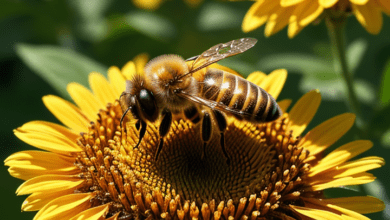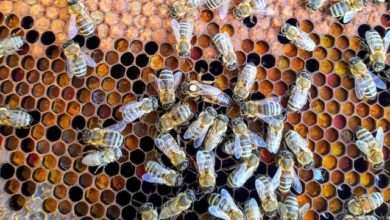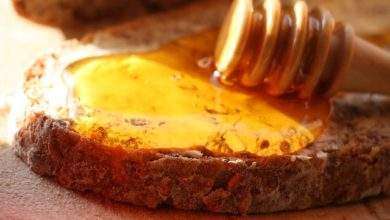Honeybee Queen Mating
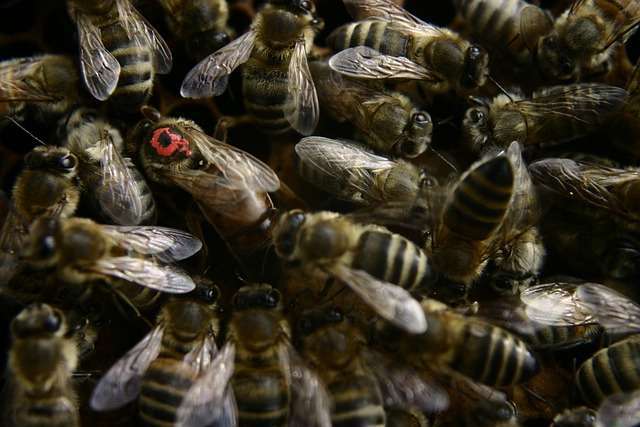
Honeybees are fascinating creatures that are responsible for pollinating crops and producing honey. The queen bee is vital to the survival and health of a honeybee colony.
A queen bee is larger than the other bees in the colony, and she has a special role in the bee community. Her primary function is to lay eggs, which will hatch into worker bees, drone bees, and new queen bees.
One of the most intriguing aspects of the honeybee queen’s life is the process of mating. In this article, we will explore the fascinating world of honeybee queen mating and learn about the intricacies of this process.
The Importance of Honeybee Queen Mating
Within the hive, there is a distinct social hierarchy, and the queen bee is at the top. The queen bee’s responsibility is to lay eggs, ensuring the survival and growth of the hive.
But what happens when a queen bee is not successfully mated? This is where the importance of honeybee queen mating becomes apparent.
Mating for the Queen Bee
A queen bee will leave the hive only once or twice in her life to mate with drones. During mating, the queen will mate with several drones, storing their sperm in a special organ called the spermatheca. Once mated, the queen will return to the hive and begin laying eggs for the rest of her life.
Why Mating is Important
If a queen bee is not successfully mated, she will only be able to lay unfertilized eggs, producing only male drones. This would be problematic for the hive, as drones do not have the ability to gather food or care for the young. Without a queen bee that can lay fertilized eggs, the hive will eventually die out.
In contrast, a queen bee that has mated with multiple drones will have stored enough sperm to lay fertilized eggs, producing both males and females.
The female bees, also known as worker bees, are responsible for gathering food, caring for the young, and keeping the hive clean. With a successful queen bee, the hive will thrive and continue to grow.
The Risks of Inbreeding
Inbreeding occurs when a queen bee mates with drones from within her own hive. This can result in genetic defects and an increased risk of disease within the hive. To mitigate these risks, beekeepers will often introduce a new queen bee into the hive every few years.
Physical Differences Between a Queen Bee and a Worker Bee
Did you know that within a beehive, there are different types of bees each with their own unique roles? One of the most significant differences in appearance lies between the queen bee and the worker bee.
Here are some of the physical differences between a queen bee and a worker bee.
- Size – The most noticeable physical difference between a queen bee and a worker bee is their size. Queen bees are significantly larger than worker bees. Queen bees can grow as long as 20mm, while worker bees grow approximately 15mm in length. The queen bee is usually wider and has a noticeably larger abdomen than the worker bee.
- Wing Size – Another physical difference between the two types of bees is their wings. Queen bees have shorter wings in proportion to their bodies compared to worker bees. This is because queen bees rarely leave the hive for long periods. In contrast, the worker bees are responsible for foraging for food and must travel significant distances, thereby requiring longer, more robust wings to sustain flight.
- Abdomen Color – The color of the abdomen between queen bees and worker bees is vastly different. Queen bees have a solid, uniform color throughout their abdomen, while worker bees have strips or patterns throughout their abdomen. This is because the queen bee’s only job is to lay eggs, and as a result, their abdomen does not change color with age or activity.
- Behavior – Queen bees have unique behavior compared to worker bees. Queen bees do not participate in activities such as foraging or nest building. Instead, their sole job is to lay eggs. Worker bees, on the other hand, engage in all activities necessary for building and running a beehive.
As described above, the physical differences between a queen bee and a worker bee are distinct. From their size and wings to the color of their abdomen, these differences are a result of their unique roles in the beehive.
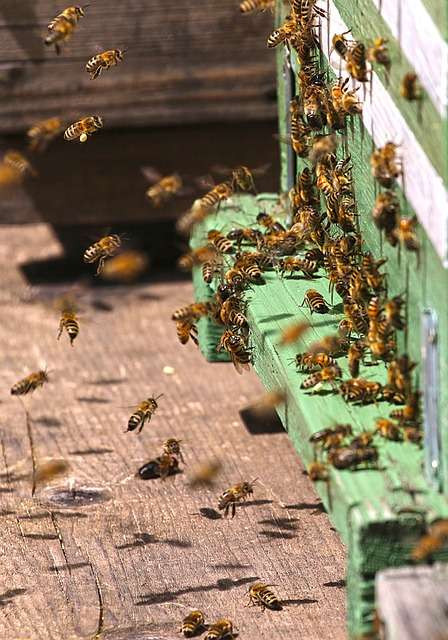
Understanding the physical differences between these two types of bees is essential for beekeepers and enthusiasts, as it allows for a better understanding of bee behavior and a more exceptional appreciation for these fascinating insects.
Lifespan and Breeding Potential of the Queen Honeybee
The queen honeybee is a vital member of the honeybee colony. She is the only female member capable of laying eggs, and her lifespan and breeding potential play a significant role in the success and sustainability of the colony.
Development of the Queen Honeybee
The queen honeybee begins her life as an egg, just like the other members of the colony. However, she is fed with a special substance called royal jelly, which triggers the development of her reproductive organs. This unique diet allows the queen to mature into a fertile adult capable of laying eggs.
Lifespan
The lifespan of a queen honeybee is considerably longer than that of the other members of the colony. On average, a queen honeybee can live for three to five years. This lifespan allows her to lay a vast number of eggs, ensuring the survival of the colony.
Breeding Potential
The breeding potential of the queen honeybee is significant. In optimal conditions, a queen can lay up to 2,000 eggs per day, with up to 200,000 eggs laid in a year. This incredible reproductive potential allows the colony to flourish and replenish its numbers.
Factors Affecting Lifespan and Breeding Potential
Several factors can affect the lifespan and breeding potential of the queen honeybee. These include stress, disease, and genetics.
Stress levels can increase due to environmental factors, such as extreme heat or cold, pollution, or habitat destruction. Diseases can also reduce the lifespan and breeding potential of the queen honeybee.
Genetics plays a role as well, as some strains of bees are genetically programmed to have shorter lifespans and reduced breeding potential.
The queen honeybee is a vital member of the honeybee colony, and her lifespan and breeding potential have a significant impact on the colony’s success and sustainability.
Understanding the development, lifespan, and breeding potential of the queen honeybee is critical for beekeepers and researchers seeking to protect and conserve honeybee populations. By managing stress levels, reducing disease risks, and utilizing genetic screening, we can support the queen honeybee’s wellbeing and ensure the survival of honeybee colonies across the globe.
Queen Bee Mating Process
The queen bee is the backbone of any bee colony. She lays eggs that hatch into worker bees, drones, and future queen bees. However, before the queen bee can start laying eggs, she must mate with drones.
Here’s a brief overview of the queen bee mating process:
1. Queens leave the colony: Queen bees leave their colony once they are ready to mate. They emit a pheromone that attracts drones from other colonies.
2. Drones mate with the queen: When the queen finds a drone, they mate in mid-air. The drone’s reproductive organ ruptures, killing the drone. The queen can mate with multiple drones.
3. The queen stores sperm: The queen stores the sperm from her mating flight in her spermatheca. The sperm can survive for several years, allowing the queen to fertilize eggs throughout her lifespan.
4. The queen returns to the colony: Once the queen has mated with enough drones, she returns to her colony. The queen bee will start to lay eggs in a few days.
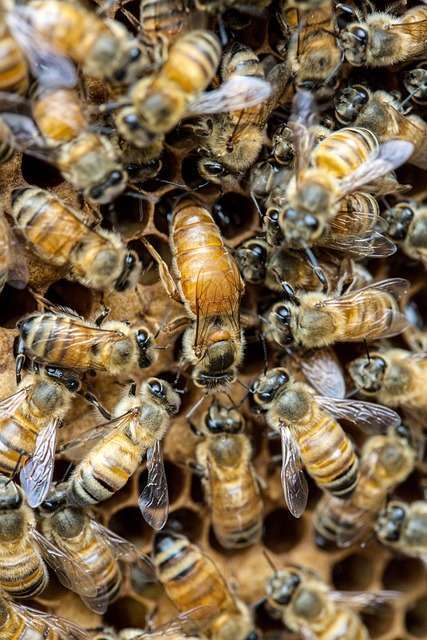
It’s important to note that the queen bee’s genetics play a crucial role in the health and productivity of the colony. Selecting and breeding queen bees with desirable traits is an important part of beekeeping. By selecting for traits like disease resistance, honey production, and gentleness, beekeepers can help maintain healthy and productive colonies.
How and When Queen Honeybees Mate
Queen bees mate once in their lifetime, and it usually happens within their first few weeks after emerging from their pupal stage. When it’s time to mate, a queen bee leaves her colony and flies off in search of a drone congregation area.
Drone congregation areas are specific locations often found in open fields or clearings. Male honeybees, also known as drones, flock to these areas to mate with queen bees. The congregation area could be several meters wide and may contain hundreds of drones.
When the queen bee arrives at the congregation area, the male bees immediately try to mate with her. Drone bees do not have stingers, and their sole purpose is to mate with the queen bee. They are attracted to her by the pheromones she emits.
Once a drone successfully mates with a queen bee, he dies. This is because males lose their genitals after mating, and the queen bee’s stinger ruptures his thorax during the act.
How Many Drones Mate with a Queen Bee?
During mating, queen bees can mate with up to 245 drones consecutively, although there have been reports of up to 60 drones. The number of drones a queen mates with determines the diversity of the colony’s genetic makeup.
However, it’s worth noting that not all queen bees mate the same number of times. Some may only mate with a few drones, while others may mate with more than twenty. The drone congregation’s size and the queen’s fertility can affect the number of drones that mate with her.
Queen bees mate only once in their lives and do so in a drone congregation area with numerous male honeybees. The process is crucial for sustaining the colony’s offspring, with queens mating with as many as twenty drones consecutively. By understanding the mating process, beekeepers can ensure the healthy reproduction of their colonies.
Factors Affecting the Mating Process
The success of queen mating depends on several factors, including the weather, the availability and quality of drones, and the health and genetics of the queen.
A warm, sunny day is ideal for a queen to mate as the drones are more active and the weather visibility is optimal. A lack of drone availability can also impact mating, as a queen may end up mating with too few drones, leading to a less genetically diverse colony.
What Happens to the Queen After Mating?
The fate of a queen honeybee after mating is heavily dependent on the health and success of the hive. A healthy queen can live for up to five years, while an unhealthy queen may be replaced by the colony or die out, ultimately leading to the death of the colony as a whole.
How Queen Mating Impacts the Colony
The quality of the queen’s mating directly impacts the health and productivity of the bee colony. The genetic diversity she brings from mating with multiple drones leads to a healthier and more disease-resistant colony.
Additionally, a well-mated queen will lay more eggs consistently, resulting in a larger population of bees, which means a more productive and healthy colony.
Queen Mating and Hive Productivity
A well-mated queen also ensures the overall productivity of the hive. The more eggs a queen lays, the bigger the population of bees will be, and the more honey and wax the colony can produce.
This is especially important during the spring and summer when the colony needs to increase and prepare for winter. A poorly mated queen will decrease a colony’s productivity and negatively impact its ability to survive the winter.
Conclusion
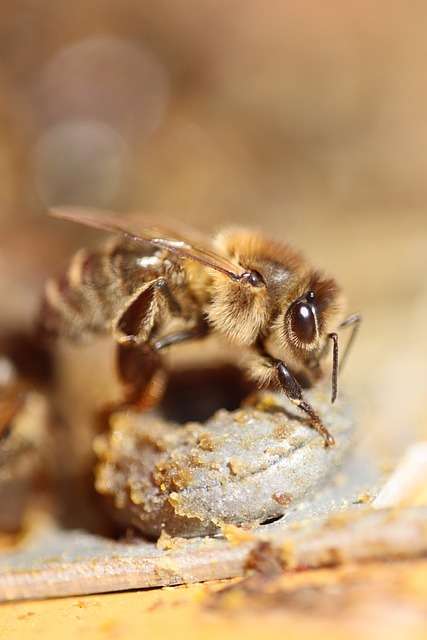
The honeybee queen is an essential part of the hive, and the mating process is a vital aspect of the honeybee’s lifecycle. Understanding how queen bees mate is crucial for beekeepers and scientists as they work to preserve and study these fascinating creatures.
While the process of honeybee queen mating may seem mysterious and complex, it is also a beautiful and intricate process that showcases the incredible diversity of life on our planet.
FAQ
How long does the process of Queen Mating take?
The process can take anywhere from a few days to several weeks, depending on the health and readiness of the queen and the hive.
What are the risks associated with Honeybee Queen Mating?
The risks associated with Honeybee Queen Mating include the potential for conflicts between the new queen and existing bees, as well as the possibility of disease or other health issues within the hive. Proper monitoring and management can help mitigate these risks.
How can I learn more about Honeybee Queen Mating?
To learn more about Honeybee Queen Mating, contact your local beekeeping association or service provider. They can offer training, guidance and support throughout the process of introducing a new queen to your hive.
